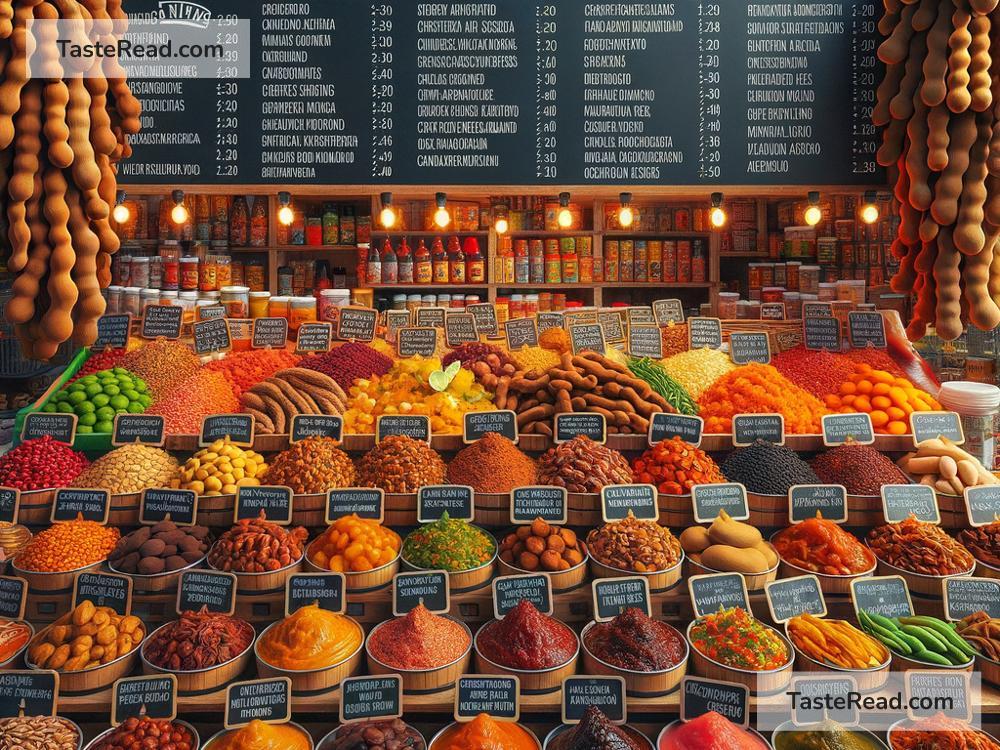The Fascinating Story of Tamarind in Global Cuisines
Food is a beautiful way to connect cultures. Every ingredient has its own story, and some travel far and wide, gathering traditions and flavors along the way. One of the most fascinating ingredients in global cuisines is tamarind. This tangy fruit, hidden inside a pod, has found its way into kitchens from Asia to Africa, Europe to the Americas. Tamarind’s journey across cultures is a story of trade, creativity, and timeless taste.
What is Tamarind?
Tamarind comes from the tamarind tree (scientific name Tamarindus indica), which is native to Africa. The name “tamarind” is derived from the Arabic phrase “tamr-hindi,” which means “Indian date.” This name reflects an early misunderstanding of its origins, as tamarind was thought to be native to India. Over time, it spread across tropical regions worldwide and became an essential ingredient in many cuisines.
The fruit grows as brown, elongated pods containing sticky, tart pulp inside. The pulp is the part used for cooking. Its taste is both tangy and sweet, and this unique flavor profile makes it incredibly versatile. Whether enhancing savory dishes, balancing sweetness, or adding depth to sauces and drinks, tamarind shines in kitchens all over the world.
Tamarind’s Journey Across the Globe
Africa: The Birthplace of Tamarind
Though tamarind first grew in Africa, its culinary uses within the continent are rich and varied. In many African countries, tamarind pulp is used in drinks, stews, and marinades. For instance, in Senegal, tamarind juice is commonly mixed with sugar and water to create a refreshing, sweet-tart beverage. Tamarind is also used to tenderize meat in traditional recipes, making dishes flavorful and rich.
India: Tamarind Finds a Second Home
While tamarind originates from Africa, it became deeply rooted in Indian cuisine centuries ago. Today, many people associate tamarind with Indian food. Its tangy flavor works perfectly in dishes like sambar, a spicy lentil-based stew, and rasam, a tangy soup made with herbs and spices.
Tamarind is also a key ingredient in Indian chutneys, street snacks, and spice blends. Imli chutney, made from tamarind pulp, is drizzled over samosas and pakoras, adding a sweet-and-sour kick. In south India, tamarind rice, known as puliyodarai, is a beloved comfort food. Tamarind’s bold flavor balances India’s complex spices, making it a staple in kitchens across the country.
Southeast Asia: A Tangy Partner
In Southeast Asia, tamarind frequently stars in savory dishes. Thai cuisine, for example, uses tamarind to add tanginess to famous dishes like pad Thai and tom yum soup. In Cambodian and Vietnamese cooking, tamarind is used in sour fish soups that deliver refreshing, zesty flavors.
In the Philippines, tamarind plays a similar role in sinigang, a sour soup made with fish, pork, or shrimp along with vegetables. Tamarind’s acidity helps elevate the dish, enhancing the complex flavors of the ingredients. Its versatility is a testament to how tamarind adapts to different cuisines while maintaining its unique character.
The Middle East: Tamarind in Sauces and Sweets
In the Middle East, tamarind has been part of culinary traditions for centuries. One of the most famous examples is tamr hindi, a sweet-and-sour drink made with tamarind pulp, often served during Ramadan or hot summer days. Tamarind is also found in cooking sauces that balance acidity and heat, complementing meats like lamb and chicken.
Latin America: Sweet Meets Sour
Tamarind’s journey eventually brought it to Latin America, where it became a star in both drinks and sweets. Mexican cuisine embraces tamarind in agua de tamarindo, a popular drink made from tamarind pulp, water, and sugar. Tamarind also flavors Mexican candies, often paired with chili powder for a spicy twist. These tamarind-based snacks delight children and adults alike with their surprisingly bold taste.
In countries like Jamaica and Trinidad, tamarind is used to make cooling drinks or spice up stews. It’s a testament to tamarind’s versatility, fitting perfectly into the vibrant, tropical flavors of the Caribbean.
Europe: A Rare But Special Addition
Tamarind isn’t as widely used in European cooking, but it has found its way into specialized recipes. British cuisine adopted tamarind through colonial influence, most notably in Worcestershire sauce. This iconic condiment, known for its complex and savory flavor, relies on tamarind as one of its key ingredients.
The Americas: Tamarind as a Global Fusion Ingredient
In the United States, tamarind has risen in popularity alongside the growing interest in global cuisines. It’s commonly found in fusion dishes, drinks, and sauces. Chefs use tamarind to add a unique tanginess to barbecue sauces, marinades, and desserts. Its ability to bridge sweet, sour, and savory flavors makes it a favorite among adventurous cooks.
Tamarind’s Timeless Appeal
Tamarind’s journey from Africa to kitchens around the world speaks to its universal appeal. Its ability to complement a variety of flavors—from spicy and savory to sweet and sour—has made tamarind a beloved ingredient in diverse cuisines. Whether sipped in cooling drinks, cooked into comforting stews, or blended into tangy sauces, tamarind continues to wow taste buds with its bold and irresistible flavor.
The next time you savor a dish with a hint of tanginess, remember tamarind’s fascinating story. What started as a humble fruit in Africa has grown into a global culinary icon, connecting different cultures through the universal love of food. Tamarind proves that the right ingredient can travel far and create magic in kitchens everywhere.


